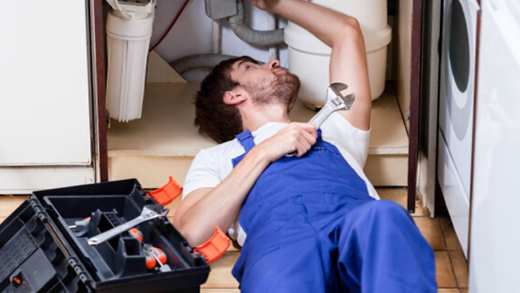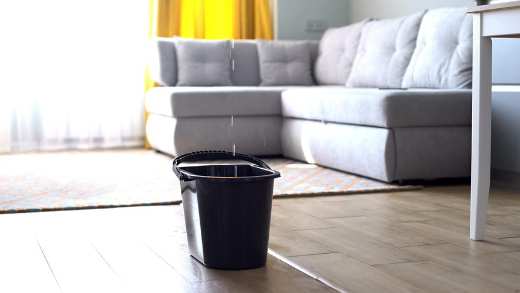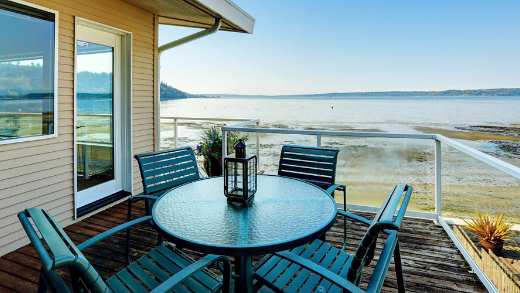If you live in an area at risk of flooding, preparation is everything. By staying one step ahead, you could help minimise a flood’s impact and protect your home against long-term damage.
We want to help make sure that if your home is flooded, you get back on track as quickly as possible. That’s why we’ve put together these essential steps to manage your home before and after a flood.
How to prepare for a flood
Being prepared starts with being aware. People often underestimate the danger of flooding to their homes, even if they live in high-risk areas. When looking for a new home to buy or rent, the question of flooding is often a low priority for people. And sometimes it’s not a consideration at all.
If you’re a homeowner or tenant, ask yourself:
- Is your home in a flood risk area? You can find out by using the Government’s flood risk checker. Also, just because you don’t live near an obvious source of flooding, such as a river, it doesn’t mean your property isn’t at risk. There are different types of flooding, including flash floods, which can happen anywhere.
- Has your home flooded before? Homes that have flooded previously are at a higher risk of flooding again.
- If you live in a flood risk area, are there any flood defences where you live or does your home have any flood protection in place? These normally fall into two different categories. Flood-resistant measures, like flood gates, help to stop water from entering the property. Flood-resilient measures, like having tiled floors rather than carpet, help reduce the damage caused by flood water.
- If you’re a homeowner, does your insurance cover flooding? For homeowners, your buildings insurance often covers flooding. But check the details of your policy so you know exactly what is and isn’t covered.
- If you’re renting, do you have insurance? Even if you’re renting, it’s important to get cover for your belongings. Many providers, including us, offer specialised tenants’ and renters’ insurance. This cover would also help to provide temporary accommodation if your home becomes uninhabitable. You should also find out what cover your landlord has and how that would protect you. For example, if your rented home flooded, who would pay for you to live somewhere else? Your landlord’s insurance may cover this, but if it doesn’t, you might have to make your own arrangements.
You should consider the same questions if you’re looking to move home either by buying a new property or renting. This is particularly important if you’re moving to an area you’re not familiar with, as you might not be aware of the flood risk, or past flooding.
What to do before the flood
Moving electrical goods above ground level or upstairs should be one of your first tasks. With heavy items like fridges, ask someone to help you raise them on bricks where possible. And to stay on the safe side, turn off gas, electricity and water supplies at the mains.
Move things upstairs
Move as much furniture as possible to a higher level or upstairs. If there’s something you want to protect that’s too heavy to carry, move it away from walls. This will speed up drying times if things get wet.
Try to prevent water from getting in
Laying sandbags at entry points offers a great first line of defence in the face of a flood. If you can’t get hold of sandbags in time, a pillowcase or plastic bag filled with garden soil will also work well.
Put your valuables somewhere safe
Make sure you know where your valuables are and store them upstairs where possible. It’s also a good idea to double-check your home insurance policy to ensure your valuables are listed. If they’re not, your provider may not cover it if something happens.
Take care of your paperwork
Keep important documents in watertight plastic bags in a high, safe place. Consider keeping duplicate copies of documents with family or friends. And if you have a smartphone or tablet, take a picture of them in case you lose the originals.
Leave internal doors open
Or you can remove them if possible and store them on an upper floor.
Fit a temporary toilet pan seal
Specialist devices can be fitted very quickly to prevent the backflow of floodwater.
Make a flood kit
It’s better to be safe than sorry. Keep some essentials close by just in case you need to get on the move once the flood has hit, such as:
- Vital personal documents
- Torch and batteries
- Wind-up radio
- Spare mobile phone
- Rubber gloves, wellington boots and waterproof clothing
- First aid kit (including any important medication)
- Blankets
Consider keeping a list of useful phone numbers handy, such as the local council, just in case you need to contact them.
Help your neighbours
Make sure everyone knows there is a flood on the way — especially the elderly or infirm.
Stay flood aware
Get real-time flood warnings and advice from The Environment Agency and listen out for any local announcements in your area.
Make sure your insurance is up to date
Most home insurance policies cover flooding as standard. Though if you live in an area with a high risk of flooding, double-check exactly what is and isn’t covered.
What to do after a flood
Once dirty water has entered your home, your priority is to dry it out. It might be worth looking into pump and sump systems to help speed things up.
You should also:
- Contact your insurer as soon as possible.
- Don’t touch any electrics — they could have been damaged by water and become live.
- Start identifying damaged items. Make a list and take photos if you can — this will make it easier to assess the damage and speed up your claim.
- Be alert to scams. Independent flood or loss assessors may get in touch with you and offer to manage your insurance claim on your behalf, but many charge a fee, which could be taken from your insurance settlement. We, along with any reputable insurer, manage claims for our customers from start to finish, so there’s no need to appoint a separate loss assessor. Insurers also have access to many local or regional tradespeople and temporary accommodation, and will talk to customers about resilient repairs, which is unlikely to be the case if loss assessors are involved.
Flood-proofing your home
Following a flood, you may want to think about adding anti-flood fixtures to your home.
Many insurers will help with finding local authority grants for flood-resilient repairs, which help reduce the damage cause by flood water. They can discuss the benefits of these with you when you make a claim. You might not think they’re necessary, but if you’ve been flooded once, you’re more likely to suffer another flood in the future.
Flood-resistant measures include:
- Flood gates on doors and windows.
- Non-return valves on toilets or other waste-water systems, and self-closing airbricks to help stop water from entering your home.
Flood-resilient measures include:
- Replacing carpets with tiled, solid wood or concrete floors.
- Moving plug sockets and electrical equipment above any expected flood level, putting washing machines on plinths, and raising boilers and meters higher up.
- Installing free-standing kitchen units on legs.
- Storing items on low shelves in baskets, which can be moved easily if there’s a flood.
- Keeping important or sentimental items upstairs.
- Replacing concrete or tarmac drives or patios with more porous materials, like gravel or grass, to help water absorb into the ground.
These changes could help you to either stay at home after a flood or move back in quicker after experiencing one.










